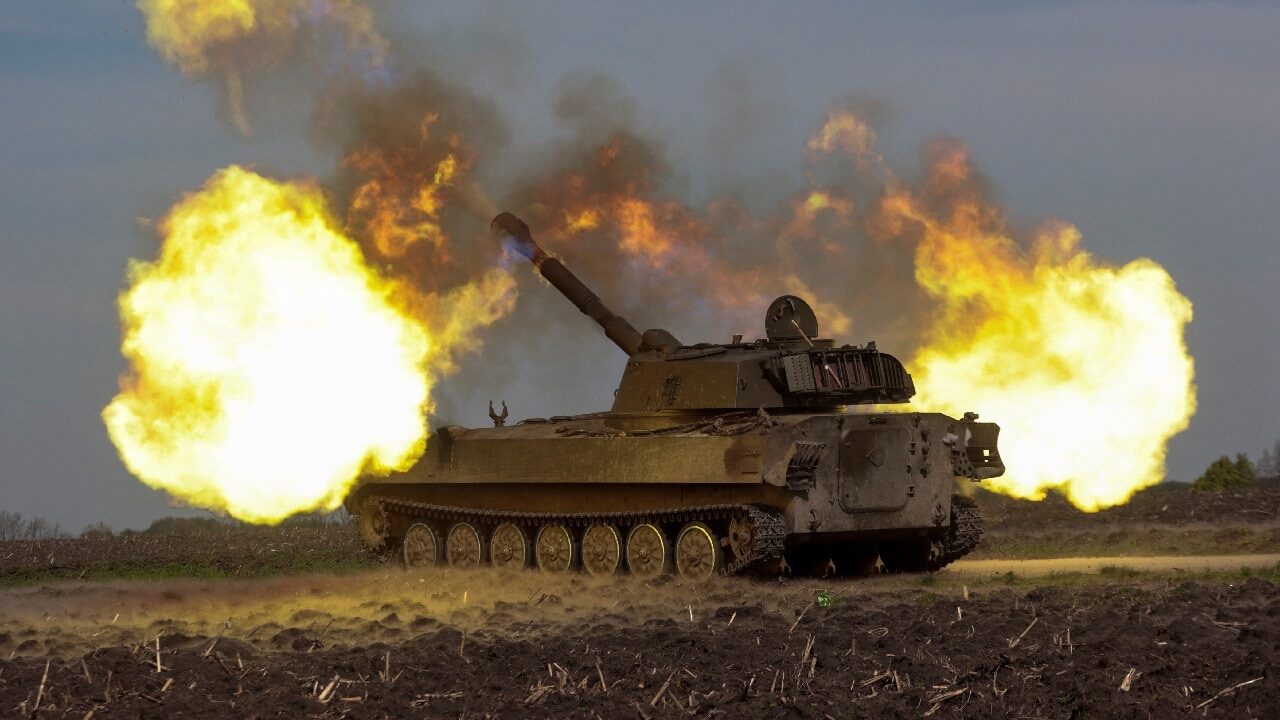Information continues to emerge today from multiple sources that Zelenky’s troops in Bakhmut destroyed the last few bridges providing resupply and escape routes for its troops. The long battle for Bakhmut appears to have effectively come to an end. Though it is impossible to say with any degree of certainty what the fall of the city will have on the outcome of the war, there are a few consequences likely.
Few of them are positive for Ukraine.
The Battle for Bakhmut: What Will Happen?
As the fate of the city has been perilous since the fall of Soledar in mid-January, few analysts will be surprised if Russian forces capture Bakhmut. Predictably, however, many Western analysts have recently been claiming that Bakhmut’s fall isn’t particularly meaningful, as it was of “little strategic importance.”
Yet one might reasonably ask, if holding Bakhmut was that unimportant, why did Ukraine fight so tenaciously to retain its possession, sending a non-stop string of reinforcements there, even after it was clear the Ukrainian Armed Forces (UAF) could no longer hold. On Wednesday, Ukrainian officials suggested they “might pull troops back” from Bakhmut. With the revelation on Friday that Ukrainian units had blown the last two bridges supplying troops in Bakhmut, the fate of control of the city has been effectively sealed.
The question now: what implications, if any, will the Russian capture of Bakhmut represent for the course of the war? In the near term, the loss of Bakhmut won’t make much difference. Only time will tell, but the longer term implications could be more serious for Ukraine.
The UAF has long understood Bakhmut would be nearly impossible to hold, and as far back as May 2022, began to prepare new lines of defense in the Slovyansk-Kramatorsk area. Based on the loss of Soledar in January and the number of troops Russia had committed to the capture of Bakhmut by early February, the Ukrainian leaders could have withdrawn its troops in an orderly fashion to man new positions in the Slovyansk-Kramatorsk line by early to mid-February.
Had they done so, the UAF could have saved countless thousands of lives and occupied well-designed and defensible positions approximately 40km to the west. Instead, it appears the Ukrainian command authorities pulled reserves from the north that were previously earmarked for offensive operations in the Svatovo-Kreminna direction and in the South from troops positioning to launch a spring offensive out of Zaporizhia to capture Melitopol.
Losses of the scale Ukraine has suffered in the past two months reinforcing the defense of Soledar and Bakhmut cannot be easily replaced and will put their offensives at greater risk owing to having fewer forces available. Unfortunately for Kyiv, fewer troops won’t be the only difficulty they face in their upcoming offensives.
In a December interview, the commander in chief of the Ukrainian Armed Forces, Gen. Valeri Zaluzhny, said to have a chance to drive to Melitopol, his forces would need at least 300 new Western tanks, up to 700 armored personnel carriers, and 500 howitzers. Despite flourishing headlines last month from Western nations, the UAF has received pledges of barely one third of the tanks, and even fewer personnel carriers and howitzers. Worse, barely two battalion’s worth of modern armor is expected to be available to Zaluzhny’s forces by the end of the summer.
That means if there is to be a Ukrainian spring offensive to try and cut the Russian occupation in half by taking Melitopol, their commander will have to do so with fewer trained men than he had last December and only token numbers of the modern kit he claimed he needed. Last month Ukrainian intelligence claimed Russia had amassed a force of more than 300,000 troops in Ukraine, equipped with a jaw-dropping 1,800 tanks, almost 4,000 armored vehicles, and 2,700 artillery pieces.
Up to this point, only a small portion of that force has engaged along the roughly 1,000km front. Some analysts, such as Center for Naval Analysis’ Michael Kofman, question the capacity of the Russian forces’ ability to sustain offensive operations, despite their number. Yet as has been the case throughout Russian military history, they have shown an ability and willingness to sustain significant casualties to win tactical objectives.
In any case, Zaluzhny will face considerable risk if he attacks into a Russian force of that size, with fewer troops than he anticipated (owing to the losses in Bakhmut), and with far fewer modern Western tanks, personnel carriers, and artillery pieces than he said he needs. Russia, moreover, has for months been preparing defensive positions in depth throughout its side of the line of contact, and any Ukrainian attack would have to pierce a dug-in Russian army, which under any circumstances is a bloody and tough task.
What Happens Next?
In the short term, Ukraine will complete its withdrawal from Bakhmut and strengthen its defensive lines in the Slovyansk/Kramatorsk area, and Russia will likely continue its slow grind in that direction. Russia will likely not, however, turn the capture of Bakhmut into a “breakthrough” that could see major gains. Longer term, however, the time lost and casualties suffered by Ukraine could pose a risk that their spring or summer offensives fail to push Russia back, which would ultimately make the cost of holding out too long in Bakhmut painfully high. Only time will tell how costly the loss of Bakhmut turns out to be.
Author Expertise and Experience
A 1945 Contributing Editor, Daniel L. Davis is a Senior Fellow for Defense Priorities and a former Lt. Col. in the U.S. Army who deployed into combat zones four times. He is the author of “The Eleventh Hour in 2020 America.” Follow him @DanielLDavis.

